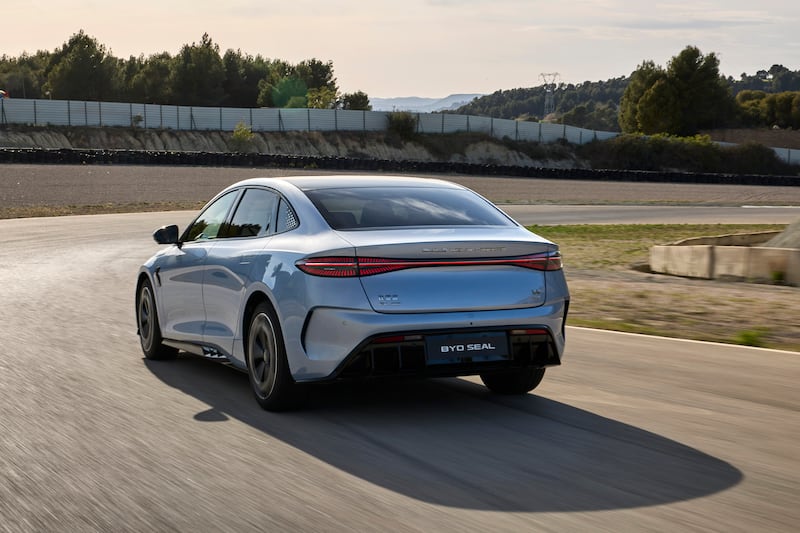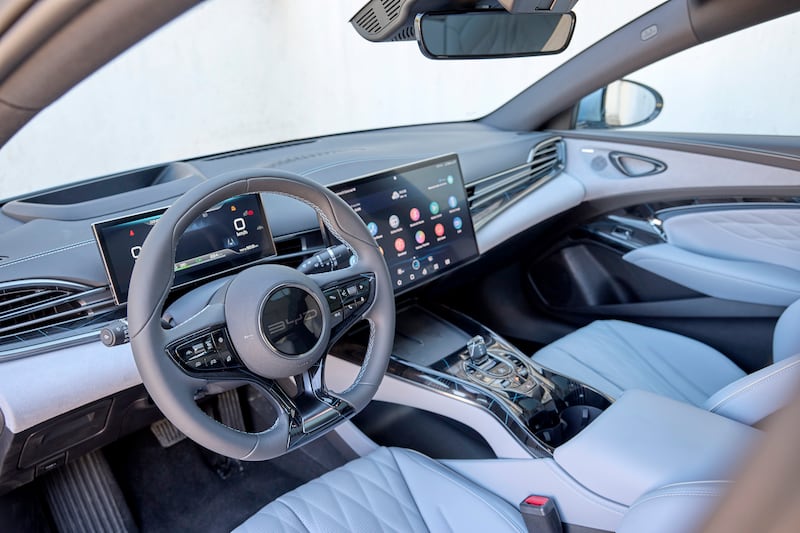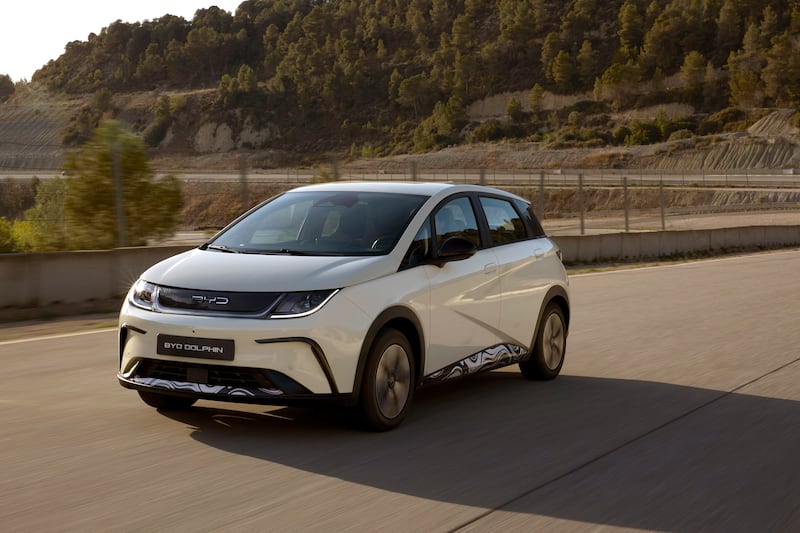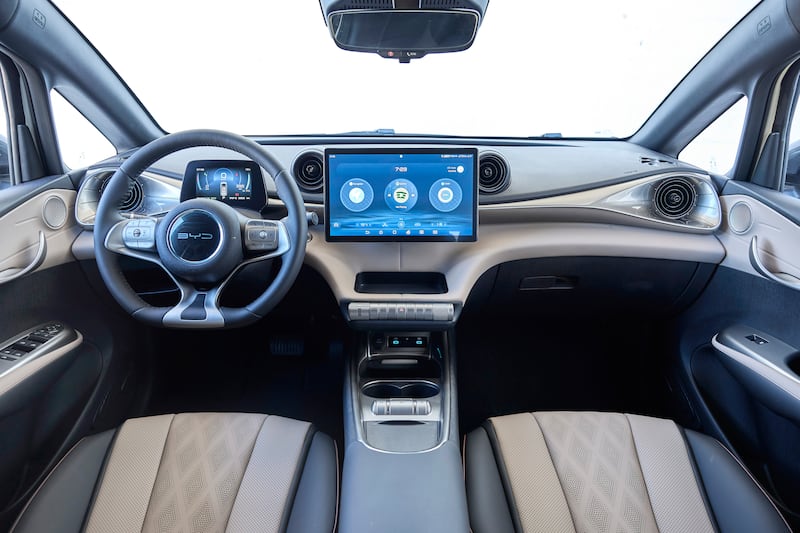It’s a familiar feeling. We’re sitting in a car at the end of a long pit straight on a dusty and sunny racetrack somewhere near the Mediterranean. I’ve been here a thousand times before, even if the other places were not technically “here”. The instructor, sitting in the passenger seat, bids me to select D on the automatic gearbox, and I press down firmly on the brake with my left foot while pressing, with equal firmness, on the accelerator, pushing it to the carpet with my right foot. The seconds tick by slowly before the instructor, with a barely perceptible wave of his hand, bids me to launch. I lift my left foot.
Whoosh.
The feeling in the pit of my stomach is as if someone has pushed me down a bottomless shaft, and I’m instantly falling at terminal velocity. My eyeballs feel like they’re flattening, and the pitwall and lines of cones flash past in a featureless blur of cement grey and reflective orange.
“And now brake gently, please.”
READ MORE
Pressing the left-hand pedal releases the pressure on my eyes and throws a soft cushion into the bottomless shaft. We’re back down to walking pace now, and I’m turning the car around to head back to the pits. I glance at the digital display in front of me, which includes a 0-100km/h acceleration timer. It tells me that, from the millisecond when I released the brake, we were travelling at the legal main road limit precisely 3.8 seconds later. The BYD Seal is a very fast car.
And one with a very impressive battery, it would seem. I try the same acceleration run a couple of times, and there’s a queue of about 50 other journalists and broadcasters behind me doing the same. The two Seals, which are carrying out their speed runs on parallel sections of track, are doing this all day. Maximum acceleration, stop, turn around, go back, do it again. It’s a routine that puts the 80kWh battery through electronic hell, but the cars are doing their duty with seeming effortlessness.
The Seal has hints of Tesla, Porsche and Maserati in its styling, but without looking like a pastiche of any of them
BYD has already arrived in Ireland, and its Atto 3 electric crossover is going to be in the company’s Irish dealerships (two in Dublin, one in Cork, with more to follow) by the end of April. The Atto 3 is an entirely inoffensive car, one that looks almost totally generic on the outside, and whose performance, range, and roadholding cleave to the dictionary definition of “middle of the road”. Not outstanding, but equally fairly impressive for a mid-range family crossover.
What comes next is something else again. BYD is a corporate colossus, and while other car makers are launching new products that will take a year or more to actually reach Irish shores, BYD is flexing its mercantile muscles – buying up entire fleets of ro-ro cargo ships – to ensure that we won’t have to wait long for more new product.
The Seal – the company is fond of aquatically themed names – is a direct competitor for the Tesla Model 3, Hyundai Ioniq 6, and VW ID.7. It’s a low-slung, sharp-looking four-door saloon with hints of Tesla, Porsche and Maserati in its styling, but without looking like a pastiche of any of them. It’s very handsome, and that goes double for the interior, which is slathered with so much fake suede and pleather that it almost starts to feel a bit gauche. Quality levels are impressive, and four full-sized adults can get very comfortable.

Basic versions of the Seal will come with a single electric motor, driving the rear wheels, and developing 313hp. With an 82KWh battery pack, it’s expected to have a one-charge range of up to 570km. The all-wheel-drive one – the one we’ve been ragging back and forth on the racetrack – gets a slightly smaller 80kWh battery, 530hp from two electric motors and a range of 520km (although at one point our test car was displaying a range north of 600km on a less-than-full battery, so maybe there’s some wiggle room in those figures).
The Blade battery (so called because it’s one continuous structure, rather than a battery pack made up of lots of individual modules) recharges at 150kW from a DC charging point, so there’s hope for being able to complete long journeys. Better yet, the battery not only uses no nasty-to-mine cobalt, it’s also used as a structural member of the car’s body, saving weight and increasing the body stiffness to a McLaren-like 40,500N.m/degree.

Prices? We’ll have to wait till the autumn to find out, but BYD seems to be aggressively targeting Tesla and VW with its pricing structures, so expect it to be competitive.
Want something more affordable? BYD can provide. The Dolphin (is SpongeBob SquarePants moonlighting as BYD’s product planner?) is a five-door hatchback aimed squarely at the Volkswagen ID.3, as well as others such as the MG 4 and the Renault Megane E-Tech.

It uses the same version 3.0 of BYD’s electric car platform, which is also under the Seal and the Atto 3 crossover.
The Dolphin gets a 60kWh version of the same Blade battery, which gives you a range of 420km, and there’s a 204hp motor powering the front wheels. There will be a smaller-battery version, with a range of around 300km in due course, and that car – at least according to estimates from BYD’s Irish importer, Motor Distributors Limited – could dip below the €30,000 barrier.

It’ll be well-equipped too, with pleather seats (heated) and a vast central touchscreen that rotates, at the touch of a button, from landscape to portrait layout and back again (the Seal’s larger 15.6-inch screen does that too). The cabin feels better-made, at this point, than that of the affordable MG 4.
As with the Seal, we have only driven the Dolphin briefly on track, but it does feel broadly positive, steers swiftly and accurately, and generally feels like it had good deportment. A more stringent test on bucking Irish tarmac awaits.
It’s the Seal that’s the more instantly impressive car. It’s a cut-price Taycan with the interior of a Mercedes and performance to have you giggling like a schoolboy all the way along the pit straight.
BYD might be an unknown brand right now, but cars like the Seal are going to give it instant desirability. Meanwhile, the Dolphin should take care of the more bread-and-butter business of providing families with an affordable switching point to electric motoring. BYD’s ambitions for Ireland and Europe are huge, and cars like this show that the vast Chinese company is not messing about.















